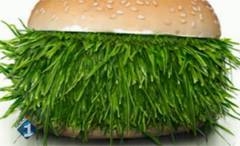Biochimie Alimentaire Pdf
Posted By admin On 26/06/18The essential oils of Thymus broussonettii, T. Satureioides, which were produced from plants collected in Morocco, were analyzed by GC. The oil of T.
Broussonettii was found to be rich in carvacrol (53.3%), p-cymene (13.5%) and α-pinene (8.6%). The abundant compounds in T. Zygis oil were p-cymene (50.6%), carvacrol (8.1%), borneol (5.8%), camphene (5.4%), α-pinene (5.2%) and thymol (5%), while the oil of T. Satureioides contained borneol (31.2%), camphene (27.4%), α-pinene (17.5%) and linalool (6.3%) as major components. Examination of the antimicrobial activity of the oils against three bacteria, two yeasts and two molds revealed that the oil of T. Broussonettii was the most efficient in both killing the microorganisms and inhibiting their growth.
The other two oils were much less active even though T. Zygis oil possessed slightly more antimicrobial activity than T.
Satureioides oil. Among the bacteria examined Escherichia coli was more resistant than Staphylococcus aureus and Bacillus megaterium both in growth inhibition and destruction trials. Aureus was more resistant than B. Megaterium to the inhibitory effect, but more sensitive to the lethal activity of the oils. The two yeasts Saccharomyces cerevisiae and Candida albicans were identical in their sensitivity towards the three oils, while the mold Zygorrhynchus sp. Was more sensitive than Aspergillus niger to growth inhibition and destruction.


Biochimie alimentaire Download biochimie alimentaire or read online here in PDF or EPUB. Please click button to get biochimie alimentaire book now. Institut National des Sciences Appliqukes, Dkpartement de Gknie Biochimique et Alimentaire. Avenue de Rangueil, UA-CNRS-N°544, 31077 Toulouse Ckdex, France. By culture ofSaccharomyces cerevisiae with cell recycle using tangential microfiltration, high cell concentrations are obtained (in the range of 0 to 345 g1-1.
Lester Piano Serial Numbers. To growth inhibition, the molds were more sensitive than the yeasts and the bacteria, but A. Niger was shown to be more difficult to destroy than the most resistant bacterium E.
The interactions between aroma compounds and other components of a wine matrix: colloids, fining agents and ethanol were investigated in model systems and with instrumental methods. The physico-chemical interactions between aroma compounds and other components depend on the nature of volatile compounds. The level of binding generally increases as the hydrophobic nature of the aroma increases.